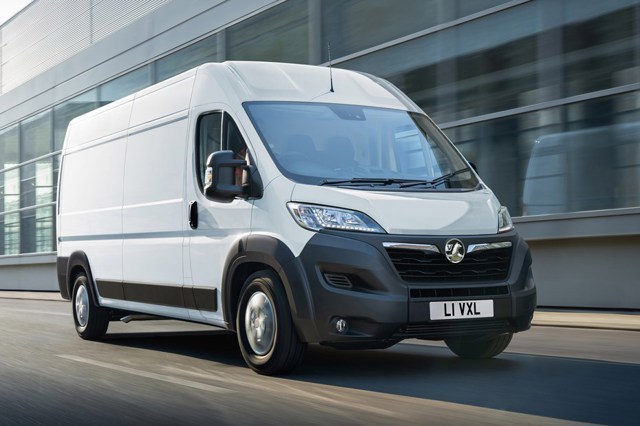Vauxhall Movano (2021 – 2024) Review
Vauxhall Movano (2021 – 2024) At A Glance
It was all-change for Vauxhall when the current Movano debuted in 2021, based on an existing large van from its sister brands, but is it as good as its heavy-duty predecessor? Read our full Vauxhall Movano review to find out.
When Vauxhall became part of the Stellantis Group, the move brought to an end a commercial vehicle partnership with Renault that had existed between the two brands since the early 1990s.
The previous Movano, which was essentially the same van as the Renault Master, was a crucial model in Vauxhall’s line-up, offered in a myriad of body styles and popular with converters. Its replacement is less adaptable. The basic van shares its bodywork and engines with the Peugeot Boxer, Citroen Relay and Fiat Ducato, which are lighter duty vans but are still more than capable contenders in the large van market – indeed, for SMEs and private users they’re cheaper to run and maintain, so while Vauxhall may have lost some of its big van appeal to fleets, it has increased the appeal to smaller users.
Just the one trim level is offered, known as ‘Prime’, but it’s well-equipped with electronic climate control, cruise control and a touchscreen as standard. Safety features include forward collision alert, blind spot warning, brake assist and lane departure warning.
Apart from the badging it looks identical to the Citroen Relay, Peugeot Boxer and Fiat Ducato, with the Vauxhall grille being cleverly incorporated into the bumper moulding.
There are three lengths and three roof height choices known as L2, L3, L4 and H1, H2 and H3, all pretty easy to interpret, while the Vauxhall Movano is also available as a crew van, chassis cab, a chassis crew cab and a platform cab with a single row of three seats. Customers can also choose from a number of approved conversions including tippers and dropsides.
All Movanos come with a standard three-year warranty.
Driving the Vauxhall Movano (2021 – 2024)
Under the bonnet, this generation of Movano has a punchy 2.2-litre common rail turbodiesel engine with a choice of 120PS, 145PS or 165PS. Even the 120PS model feels quite lively. It’s by no means fast, but it’s torquey, responsive and never feels out of its depth.
All models have a six-speed manual gearbox as standard, which has a light and easy shift, and a six-speed auto is offered with the most powerful engine.
There’s a fair bit of engine and wind noise – a Mercedes-Benz Sprinter or Ford Transit will beat the Movano in the refinement stakes – but it’s a convincing enough motorway cruiser and never feels imposing or difficult to drive.
It benefits from very good visibility for such a large van, but with extremely light steering that can feel a little vague at speed. It rides well with a full load but can be a bit crashy over bumps. Manoeuvrability is impressive, with an excellent turning circle for such a substantial vehicle.
Overall, then, the Vauxhall Movano is a competent large van that will absolutely do the job – but in some areas it’s really starting to show its age against a raft of more modern competition.
Vauxhall Movano (2021 – 2024) interior
In diesel-powered form the Movano has an impressive payload of up to 2,110kg – a plug-in model, the Vauxhall Movano Electric, is also available with a lower payload and is reviewed on Honest John separately.
On panel vans, the load bay is vast – you get between 13 and 17 cubic metres of volume depending on wheelbase, with a loading height of 1.93 metres and narrow wheelarch intrusions so it’s a fantastic machine for carrying big loads.
With the base L2 model and you can get both standard (H1) and high (H2) roof versions, with a load deck length of 3,120mm and either an interior load height of 1,662mm (H1) or 1932mm (H2). It can also be specified in 3.3, 3.5 and 4.005 tonne gross weight versions.
The longer wheelbase L3 has a load deck length of 3,705mm and an internal load height of 1,932mm, while the largest Movano panel vans are the 3.5 and 4.005 tonne L4H2 and L4H3 models, which have a load deck length of 4,070mm.
The cabin is well-trimmed – it feels a bit dated in places as the basic van can trace its roots back to 2006, but it’s smart and well-finished with some welcome recent upgrades such as its touchscreen. The passenger seat includes a drop-down desk unit, with up to 10 additional in-cab storage areas including a huge glovebox, document clip and multiple lidded compartments on the dash.
There’s also a large overhead shelf above the cab, and storage for valuables beneath the passenger seat.


:no_upscale():format(webp)/https://cdn.uk.prod.group-mobility-trader.com/images/cas/936ecdd7e36bb02c3399217bab35d741/d049d528b79e05a8983f9ac47048960b.jpg)

 Huge, multiple body styles, good value, punchy engines
Huge, multiple body styles, good value, punchy engines
 Dated in places, ride can be a bit crashy
Dated in places, ride can be a bit crashy
:no_upscale():format(webp)/https://cdn.uk.prod.group-mobility-trader.com/images/cas/ec7d9850b980149ec6168af736ab7445/c373fdf7c9d7e69d66e0cb88c281643a.jpg)
:no_upscale():format(webp)/https://cdn.uk.prod.group-mobility-trader.com/images/cas/37fe449cc4bd10fc57e2d3e68083c918/46b33aa4ccb40930b26fc07bc8352c1d.jpg)
:no_upscale():format(webp)/https://cdn.uk.prod.group-mobility-trader.com/images/cas/0eaeae8968cd0480f99e258f126beeb0/f3c55fd23ecf1e1a363d123d3b08c929.jpg)